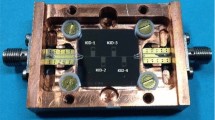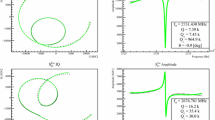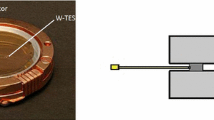Abstract
The goal of the cryogenic wide-area light detectors with excellent resolution project is the development of light detectors with large active area and noise energy resolution smaller than 20 eV RMS using phonon-mediated kinetic inductance detectors (KIDs). The detectors are developed to improve the background suppression in large-mass bolometric experiments such as CUORE, via the double readout of the light and the heat released by particles interacting in the bolometers. In this work we present the fabrication process, starting from the silicon wafer arriving to the single chip. In the first part of the project, we designed and fabricated KID detectors using aluminum. Detectors are designed by means of state-of-the-art software for electromagnetic analysis (SONNET). The Al thin films (40 nm) are evaporated on high-quality, high-resistivity (> 10 kΩ cm) Si(100) substrates using an electron beam evaporator in a HV chamber. Detectors are patterned in direct-write mode, using electron beam lithography (EBL), positive tone resist poly-methyl methacrylate and lift-off process. Finally, the chip is diced into 20 × 20 mm2 chips and assembled in a holder OFHC (oxygen-free high conductivity) copper using PTFE support. To increase the energy resolution of our detectors, we are changing the superconductor to sub-stoichiometric TiN (TiNx) deposited by means of DC magnetron sputtering. We are optimizing its deposition by means of DC magnetron reactive sputtering. For this kind of material, the fabrication process is subtractive and consists of EBL patterning through negative tone resist AR-N 7700 and deep reactive ion etching. Critical temperature of TiNx samples was measured in a dedicated cryostat.


Similar content being viewed by others
References
G. Angloher et al., Eur. Phys. J. C 72, 1971 (2012). https://doi.org/10.1140/epjc/s10052-012-1971-8
D. Artusa et al., Adv. High Energy Phys. 2015, 879871 (2015). https://doi.org/10.1155/2015/879871
D.R. Artusa et al., Eur. Phys. J. C 76, 7–364 (2016). https://doi.org/10.1140/epjc/s10052-016-4223-5
N. Casali et al., Eur. Phys. J. C 75(1), 12 (2015). https://doi.org/10.1140/epjc/s10052-014-3225-4
L. Cardani et al., Appl. Phys. Lett. 107, 093508 (2015). https://doi.org/10.1063/1.4929977
L. Cardani et al., Appl. Phys. Lett. 110, 033504 (2017). https://doi.org/10.1063/1.4974082
L. Cardani et al., arXiv:1801.08403v1
P. Diener et al., J. Low Temp. Phys. 167, 305–310 (2012). https://doi.org/10.1007/s10909-012-0484-z
C.M. McKenney et al., Proc. SPIE 8452, 84523I-1 (2013). https://doi.org/10.1117/12.925759
J. Hubmayr et al., Appl. Phys. Lett. 106, 073505 (2015). https://doi.org/10.1063/1.4913418
Acknowledgements
This work was supported by the European Research Council (FP7/2007–2013) under contract CALDER No. 335359 and by the Italian Ministry of Research under the FIRB contract no. RBFR1269SL. The authors thank the personnel of INFN Sezione di Roma for the technical support, in particular M. Iannone, F. Pellegrino, L. Recchia and D. Ruggeri. Ivan Colantoni acknowledges the Science Foundation Ireland (SFI) Grant No. 15/IA/2880 for supporting his actual contract.
Author information
Authors and Affiliations
Corresponding author
Rights and permissions
About this article
Cite this article
Colantoni, I., Cardani, L., Casali, N. et al. Design and Fabrication of the Second-Generation KID-Based Light Detectors of CALDER. J Low Temp Phys 193, 726–731 (2018). https://doi.org/10.1007/s10909-018-1905-4
Received:
Accepted:
Published:
Issue Date:
DOI: https://doi.org/10.1007/s10909-018-1905-4




